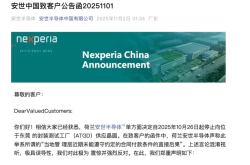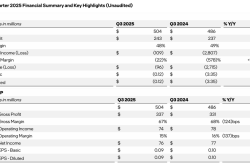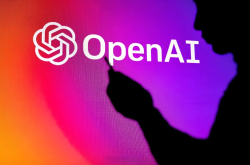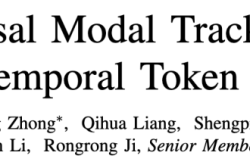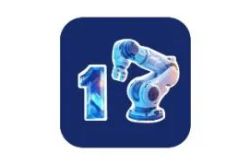From Mere Transportation Means to Intelligent Entities: Embodied Intelligence Unveils a Trillion-Dollar New Pathway for the Automotive Industry
![]() 11/10 2025
11/10 2025
![]() 525
525
As the '15th Five-Year Plan' explicitly designates embodied intelligence as a pivotal growth engine for future industries, and with Sainthero's 4D imaging radar achieving dual milestones in performance enhancement and cost optimization, the automotive sector stands at a historic crossroads, transitioning from being mere 'transportation tools' to becoming 'intelligent mobile entities.' The strategic alignment at the policy level, coupled with technological breakthroughs in core hardware, creates a synergistic momentum that not only accelerates the implementation of intelligent driving but also propels a comprehensive transformation of the automotive industry, shifting from traditional manufacturing to an integrated model of 'smart manufacturing plus services.'
Recently, the industry excitement generated by XPeng's unveiling of the Iron robot, along with the technological ripple effect from Tesla's Optimus robot, underscores the profound interconnection between the automotive and robotics sectors, each boasting trillion-dollar market potentials. These developments provide practical insights into the industrial implementation of embodied intelligence.
▍Bidirectional Empowerment: Policy Anchoring and Hardware Breakthroughs
The strategic positioning of embodied intelligence in the '15th Five-Year Plan' is not an isolated industrial strategy but a systematic blueprint rooted in the broader goals of building a manufacturing powerhouse and a digital China. The plan explicitly identifies the automotive industry as the primary arena for implementing embodied intelligence, facilitating the transition of technology from laboratories to large-scale applications through multifaceted support, including policy guidance, standard refinement, and infrastructure matching (here, 'supporting facilities' is retained in pinyin due to contextual dependency).
The Ministry of Industry and Information Technology's industrial development plan for the new era emphasizes breakthroughs in key core technologies, such as automotive artificial intelligence and vehicle operating systems. The accelerated establishment of 20 pilot cities for 'vehicle-road-cloud integration' provides policy testbeds and infrastructure guarantees for embodied intelligent vehicles. The 'Guidelines on Vigorously Developing Digital Consumption to Create a Better Life in the Digital Era,' jointly issued by eight departments, including the Ministry of Commerce, encourage the pilot access and promotion of intelligent connected vehicles from the market end, forming a closed-loop ecosystem of 'policy guidance-technological research and development-market application.'
This top-down policy framework not only offers clear guidance for corporate innovation but also lowers the barriers to technological commercialization through supportive measures such as local government purchase subsidies and R&D support, transforming embodied intelligence from a 'futuristic concept' into a tangible development opportunity for enterprises.
On the hardware front, the Turing AI chip, Tianji AIOS system, and Hawkeye Vision System integrated into XPeng's Iron robot are not isolated R&D achievements but rather a deep reuse of XPeng's long-standing expertise in intelligent driving. The Hawkeye Vision System's 720° panoramic environmental perception capability stems from the automotive intelligent driving system's recognition technology for complex road conditions. The end-to-end decision-making algorithm inherits from XPeng's second-generation VLA large model, which innovatively bypasses language translation and directly generates action commands from visual signals, empowering both the vehicle's navigation-free automatic assisted driving function and the robot's stability in walking obstacle avoidance and precise operations. This technological homology enables cars and robots to share R&D outcomes and split cost pressures, creating a '1+1>2' synergistic effect.
At the industry level, this technological synergy has become a prevalent trend. The white paper jointly released by the Chinese Society of Automotive Engineers and Geely Auto explicitly lists the VLA model as the foundation for driving intelligent agents, proposing that vehicles should possess core characteristics of autonomy, interactivity, and adaptability, which closely align with the technological requirements of embodied intelligence.
Changan Auto's massive data and computing power cluster, accumulated through the 'Beidou Tianshu' plan, have advanced its end-to-end intelligent driving architecture to a quasi-mass-production stage, with these data and algorithms also providing training foundations for potential robot products. Huawei, centered on intelligent driving technology, extends its multimodal perception and edge-side large model deployment capabilities to vehicles and intelligent terminals, constructing a cross-product technological ecosystem.
From a hardware perspective, the automotive industry's demand for lightweight, high-precision components is driving the maturity of the robotics supply chain in reverse. Core components such as harmonic reducers, six-axis force sensors, and flexible electronic skins used in embodied intelligent robots are primarily supplied by automotive component companies. These enterprises, through technological iterations, not only meet the robots' requirements for precision and reliability but also reduce the costs of automotive intelligent components through large-scale production. This cross-domain technological migration and supply chain sharing are accelerating the maturity and popularization of embodied intelligent hardware, clearing obstacles for the automotive industry's intelligent upgrade. This bidirectional empowerment's virtuous cycle not only accelerates the automotive industry's intelligent process but also spawns an integrated ecological layout of 'vehicle-machine-road-cloud,' constructing a solid industrial foundation for the deep application of embodied intelligence.
▍Transformation from Manufacturing Logic to Ecological Thinking
Embodied intelligence brings not only technological innovations but also rewrites the automotive industry's underlying logic. For a long time, competition in the automotive industry has centered on 'manufacturing capabilities,' with core values concentrated in hardware areas such as vehicle assembly, powertrains, and chassis technologies. The arrival of embodied intelligence is shifting the competition focus to 'intelligent capabilities,' driving the industry's transformation from 'hardware manufacturing' to 'ecological operations' and forming a new industrial landscape.
Traditional automakers are no longer confined to vehicle manufacturing but are transitioning to 'intelligent agent operators.' BYD, SAIC, Changan, and other enterprises leverage their million-level mass-production experience and vertically integrated supply chain advantages to reuse their vehicle manufacturing scalability in the robotics field. XPeng Auto's Iron robot has sparked industry excitement since its release, with its core value lying not only in the product itself but also in verifying the feasibility of 'migrating automotive intelligent driving technology to robots.' This humanoid robot, already participating in operations on XPeng P7+ production lines, reuses XPeng's technological accumulation in autonomous driving algorithms, multimodal perception, and AI large models, planning for industrial L3-level mass production by 2026 and demonstrating the technological synergy between 'vehicle manufacturing' and 'robot manufacturing.' This cross-border reuse not only reduces R&D costs but also endows automotive enterprises with natural technological barriers in the embodied intelligence track.
Tesla's Optimus robot's technological ripple effect influences the automotive industry from another dimension. As a global leader in new energy vehicles, Tesla migrates its automotive manufacturing automation experience, battery technology, and AI algorithms to the robotics field. Its core technologies, such as end-effectors and motion control algorithms, in turn provide new ideas for the automotive industry's intelligent upgrade.
For example, the precision control technology applied by Optimus in industrial manufacturing is expected to optimize automotive chassis motion control logic. Its multimodal perception system's R&D experience can further enhance the vehicle's environmental awareness capabilities under complex road conditions. More importantly, Tesla's 'automotive + robotics' ecological layout drives technological iterations and cost reductions in core components such as servo motors and harmonic reducers, providing supply chain support for the entire automotive industry chain's intelligent transformation. This 'bidirectional technological spillover' effect is breaking the boundaries between the automotive and robotics industries, forming a virtuous cycle of 'technological reuse-cost optimization-scale expansion.'
The strategic transformation of component enterprises serves as an important microcosm of the industrial chain's reconstruction. Driven by embodied intelligence, traditional component suppliers are transitioning to 'intelligent hardware service providers,' focusing on core areas such as 4D imaging radar, high-level chips, and precision reducers. Companies like Shuanghuan Transmission and Lande Harmonic Drive, leveraging their technological accumulation in reducers, have secured designated cooperation (here, 'designated cooperation' is retained in pinyin due to contextual dependency) with OEMs like BYD and GAC. Inovance Technology, HCY Tech, and Changan, Chery jointly develop servo and drive control systems, forming a collaborative R&D model of 'OEMs + component enterprises.' Diversified market participants are transforming the automotive industry chain from a linear supply chain to a networked ecosystem, with the competition focus shifting from single product performance to the comprehensive capabilities of 'hardware + software + services.'
▍Diversified Scenario Extensions in the Automotive Industry
The deep integration of embodied intelligence and the automotive industry is spawning diversified application scenarios, continuously expanding the automotive industry's boundaries from industrial manufacturing to mobility services, from cabin interaction to after-sales operation and maintenance. In production, XPeng's Iron robot and Tesla's Optimus have taken the lead in landing in automotive factories. In mobility scenarios, embodied intelligence enables vehicles to shift from 'passive response' to 'active service.' Intelligent vehicles equipped with 4D imaging radar and multimodal perception systems can accurately identify pedestrians, non-motorized vehicles, and static obstacles in complex road conditions, achieving real-time decision-making and path optimization through AI algorithms, enabling high-level intelligent driving to safely land in multiple scenarios such as urban roads and rural paths.
Cabin interaction is evolving towards 'hyper-personification.' Voice interaction based on large models can understand complex instructions and emotional needs, achieving a leap from 'function control' to 'scenario services.' When a user mentions 'feeling tired,' the vehicle can automatically adjust the seat angle, play soothing music, and plan the nearest rest point. In emergencies, the vehicle can coordinate (here, 'coordinate' is retained in pinyin due to contextual dependency) with emergency services and traffic police for rapid response. This deep interaction transforms the vehicle into the user's 'mobility partner,' redefining the human-vehicle relationship.
Revolutions in after-sales and service areas are also worth anticipating. Embodied intelligent robots can be applied to automotive inspection, repair, and maintenance, improving service efficiency and quality through precise fault diagnosis and standardized operations. In scenarios such as logistics distribution and charging services, the collaborative linkage of mobile robots and intelligent vehicles constructs an integrated 'vehicle-machine-human' service network.
As technologies mature, the automotive industry's profit model will also shift from 'product sales' to 'full lifecycle services.' Automakers will acquire user data by operating intelligent agents, providing personalized mobility solutions, value-added services, and financial products, forming a sustainable profit ecosystem. This transformation not only enhances user stickiness but also opens up a trillion-dollar service market space, enabling the automotive industry to achieve a leap from 'manufacturing value' to 'operational value.'
From a market space perspective, embodied intelligence brings the automotive industry growth potential from the billion-dollar to the trillion-dollar level. Goldman Sachs predicts that the global humanoid robot market size will reach $154 billion by 2035, while Citigroup is more optimistic about its long-term development, expecting the market size to exceed $7 trillion by 2050. In China alone, the automotive factory and supporting logistics and warehousing sectors have a cumulative potential demand of millions of units over the next decade, corresponding to hundreds of billions of yuan in output value. If extended to cross-border scenarios such as after-sales, energy, and 3C, the market size will achieve multiple growth. Driven by sustained policy support and rapid technological iterations, the Chinese automotive industry, leveraging its 'million-level mass-production experience + vertically integrated supply chain + algorithmic innovation' triple advantages, has formed a first-mover advantage in the embodied intelligence track.
Layout | Chen Wenliang
Image sources: XPeng Auto, Tesla, Qianku Network


